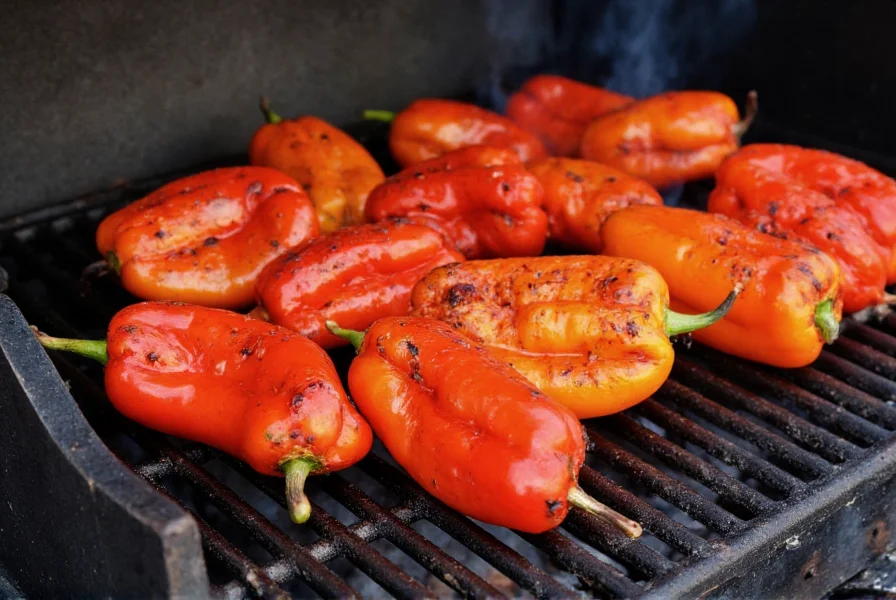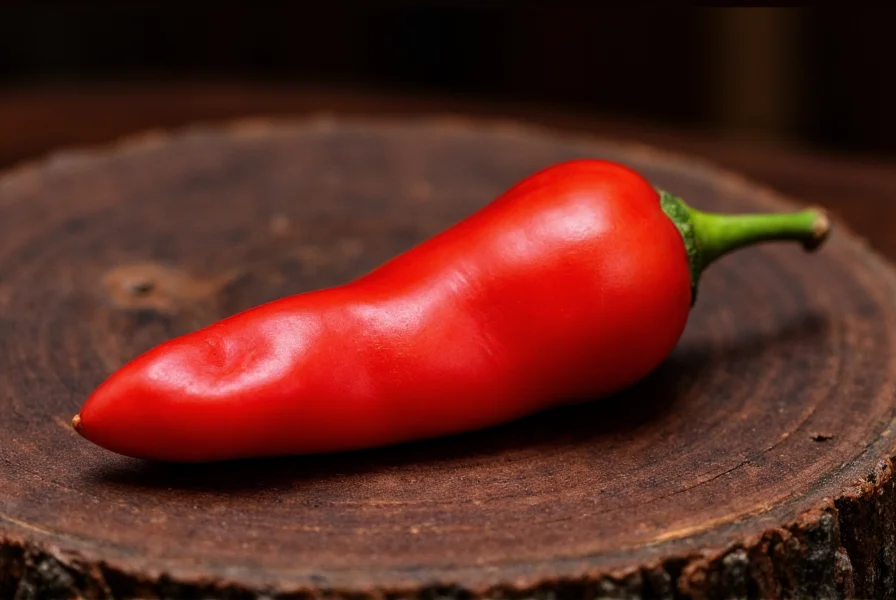Cubanelle peppers (Capsicum annuum) represent one of the most versatile sweet peppers in culinary applications. Unlike their spicier relatives, these Italian frying peppers deliver minimal heat while providing exceptional flavor depth. Understanding what is a cubanelle pepper begins with recognizing their distinctive characteristics that set them apart from other sweet pepper varieties.
Identifying Cubanelle Peppers
These elongated peppers typically measure 6-8 inches long with a curved shape resembling a banana pepper, though they're noticeably thinner-walled. When immature, they appear light green, gradually ripening to a vibrant red. The most reliable way to identify authentic cubanelle peppers is through their unique flavor profile—sweet with subtle grassy notes and virtually no heat.
| Characteristic | Cubanelle Pepper | Bell Pepper | Banana Pepper |
|---|---|---|---|
| Heat Level (Scoville) | 0-1,000 | 0 | 0-500 |
| Wall Thickness | Thin | Thick | Moderate |
| Flavor Profile | Sweet, slightly tangy | Mildly sweet | Sweet, sometimes vinegary |
| Best Cooking Method | Frying, roasting | Raw, stuffing | Pickling, sandwiches |
Culinary Applications of Cubanelle Peppers
Chefs prize cubanelle peppers for their exceptional performance in high-heat cooking methods. Their thin walls allow them to caramelize beautifully when how to use cubanelle peppers for frying or roasting. Unlike bell peppers that can become watery when cooked, cubanelles maintain structural integrity while developing complex sweet flavors.
Traditional Italian preparations include peperonata (a sweet and sour pepper stew), stuffed peppers with cheese or meat fillings, and as a key component in friggitello dishes. Their mild heat level makes them ideal for family meals where spice sensitivity varies.
Substituting Cubanelle Peppers
When facing difficulty with where to buy cubanelle peppers, which can be seasonal or regionally limited, several alternatives work well:
- Green bell peppers (less ideal due to thicker walls and milder flavor)
- Italian sweet frying peppers (often sold under this generic name)
- Shishito peppers (similar thin walls, though slightly more vegetal)
- Yellow or orange bell peppers (sweeter alternative with similar color)
For the closest match to authentic cubanelle pepper vs banana pepper characteristics, seek out Italian sweet frying peppers at Mediterranean markets or specialty grocers during summer and early fall when they're most abundant.
Growing and Selecting Cubanelle Peppers
Gardeners interested in growing cubanelle peppers should note they thrive in warm climates with full sun exposure. These plants typically reach 2-3 feet in height and produce abundant yields when temperatures remain consistently above 70°F. Harvest when peppers reach 6-8 inches and maintain firmness.
When selecting at markets, choose peppers with smooth, glossy skin free from wrinkles or soft spots. Lighter green specimens will be less sweet but more vegetal, while yellowing or red peppers indicate full ripeness and maximum sweetness. Avoid any with dark spots or signs of shriveling.

Nutritional Profile and Storage
Nutritionally, cubanelle peppers deliver significant vitamin C (providing approximately 120% of daily value per pepper) and vitamin A, along with smaller amounts of vitamin B6 and potassium. Their cubanelle pepper nutritional benefits include antioxidant properties without the caloric density of many other cooking ingredients.
For optimal storage, keep unwashed peppers in the crisper drawer of your refrigerator for up to two weeks. For longer preservation, roast and freeze them in airtight containers. Never store cubanelles near ethylene-producing fruits like apples or bananas, as this accelerates ripening and spoilage.
Cooking Techniques for Best Results
To maximize flavor when preparing cubanelle peppers, follow these professional techniques:
- Wash and dry peppers thoroughly before use
- Remove seeds and white membranes for cleanest flavor
- For frying: Slice into 1/4-inch strips and cook in olive oil over medium heat until edges brown
- For roasting: Place whole peppers under broiler until skin blisters, then steam in paper bag before peeling
- For stuffing: Blanch whole peppers for 2 minutes to soften before filling
Understanding the proper cubanelle pepper heat level ensures you can confidently use them in dishes where heat sensitivity matters, such as children's meals or for individuals with digestive sensitivities.

Seasonality and Availability
Cubanelle peppers reach peak season from July through September in North America, though greenhouse production extends availability through winter months. During peak season, they're commonly found at farmers' markets, Italian specialty grocers, and increasingly in mainstream supermarkets' international produce sections.
When out of season, frozen cubanelle peppers maintain reasonable quality for cooked applications, though fresh specimens always deliver superior texture and flavor complexity. Canned versions exist but significantly alter the delicate flavor profile and are generally not recommended for authentic preparations.











 浙公网安备
33010002000092号
浙公网安备
33010002000092号 浙B2-20120091-4
浙B2-20120091-4